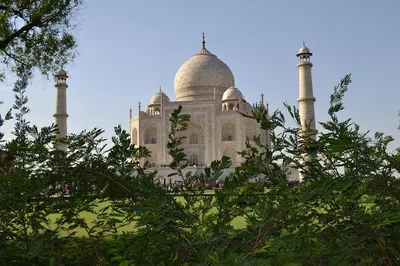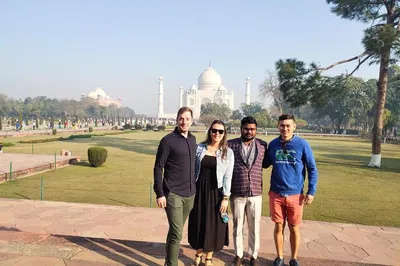Golden Triangle Tour: 4 Days of India's Best Sights
5760
Overview
The Private Golden Triangle Tour (3 Nights/4 Days) shows off the best of India's history, culture, and amazing buildings. This tour takes visitors to three famous cities: Delhi, Agra, and Jaipur. These cities make a triangle shape on the map.
The tour starts in Delhi. Here, people can see the India Gate, Lotus Temple, and other important places like Qutub Minar and Humayun’s Tomb. Next, the tour goes to Agra. Agra is home to the Taj Mahal, Agra Fort, and Mehtab Bagh. Then, the tour ends in Jaipur. Jaipur is called the Pink City. People visit Amber Fort, City Palace, Hawa Mahal and Jal Mahal. Along the way to each destination, one will drive to Delhi, Udaipur, and Fatehpur Sikri. This tour gives travelers a good look at India's different cultures in just four days.
This tour includes a private car, hotel stays, and a guide in each city. The tour does not include lunch or dinner or personal expenses. With all the details handled, visitors can simply enjoy the wonders of the Golden Triangle.
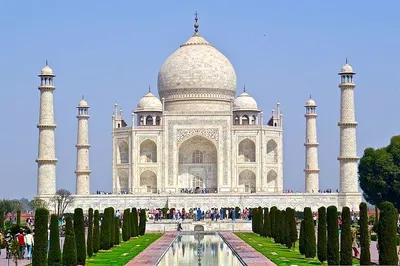
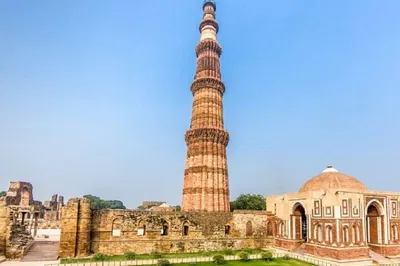
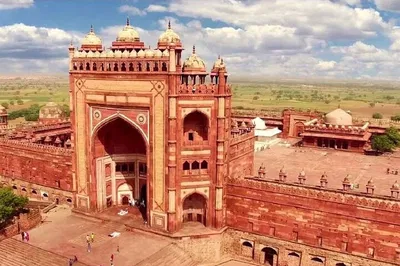

Highlights
See the Taj Mahal: Visit one of the most beautiful buildings in the world.
Private Car: Travel in comfort with your own car and driver.
Expert Guides: Learn about the cities from knowledgeable local guides.
All-Inclusive: Enjoy hotel stays and monument tickets are included.
Sentiment Analysis
Most customers really enjoyed the tour and thought it was a great way to see India. The guides and travel were highlights for many.

Customers loved seeing the Taj Mahal and other historical places.
Many tourists thought the tour guides were very friendly and knew a lot.
Reviewers highlighted that the hotels were nice and comfy.
Travelers mentioned that having a private car made the trip easy.
Some people felt like they spent too much time in shops.
A few visitors didn't like the traffic in the cities.
The Journey
India Gate
India Gate, a towering 42-meter war memorial in New Delhi, stands as a poignant reminder of the Indian soldiers who sacrificed their lives in World War I. Designed by Sir Edwin Lutyens, this iconic monument not only commemorates bravery but also serves as a symbol of India's national pride and patriotism. Visitors can stroll through the lush gardens surrounding the gate, reflecting on history while enjoying the vibrant atmosphere.
Lotus Temple
The Lotus Temple in Delhi is a breathtaking Bahá’í House of Worship, celebrated for its distinctive lotus-shaped architecture. Open to people of all faiths, it promotes unity and peace, offering a tranquil sanctuary amidst Delhi's bustling energy. Surrounded by serene gardens, the temple provides a perfect space for meditation and quiet reflection, inviting visitors to experience spiritual harmony.
Qutub Minar
Qutub Minar, a UNESCO World Heritage Site in Delhi, soars to a height of 73 meters, making it the tallest brick minaret in the world. Built in 1193 by Qutb-ud-din Aibak, this architectural marvel showcases stunning Indo-Islamic design and intricate carvings. Exploring this historic site allows visitors to step back in time and admire the fusion of cultures that shaped India's rich heritage.
Humayun’s Tomb
Humayun’s Tomb in Delhi, a UNESCO World Heritage Site, is a magnificent precursor to the Taj Mahal and a prime example of Mughal architecture. Built in 1570, this garden-tomb blends Persian and Indian styles, offering a glimpse into the grandeur of the Mughal era. Wander through the beautifully designed Charbagh garden, and be transported to a world of imperial splendor and artistic brilliance.
Taj Mahal
The Taj Mahal in Agra, India, is an iconic white marble mausoleum built by Mughal Emperor Shah Jahan in memory of his beloved wife, Mumtaz Mahal. A UNESCO World Heritage Site, it is revered for its breathtaking architecture, intricate carvings, and profound symbolism of eternal love. Visiting the Taj Mahal is a deeply moving experience, offering a glimpse into one of history’s greatest love stories and architectural achievements.
Agra Fort
Agra Fort, a UNESCO World Heritage Site, is a majestic red sandstone fortress built by Emperor Akbar in 1565. Situated near the Taj Mahal, this imposing fort houses an array of stunning palaces, mosques, and audience halls that exemplify Mughal grandeur and architectural prowess. Exploring Agra Fort is a journey through time, allowing visitors to witness the opulence and strategic importance of the Mughal Empire.
Fatehpur Sikri
Fatehpur Sikri, a UNESCO World Heritage Site near Agra, was built by Emperor Akbar in the 16th century and briefly served as the capital of the Mughal Empire. Known for its remarkable Mughal architecture, the city features key attractions such as Buland Darwaza, Jama Masjid, and the tomb of Salim Chishti. Visiting Fatehpur Sikri provides a captivating insight into Akbar’s vision and the artistic achievements of the Mughal era.
City Palace, Udaipur
The City Palace in Udaipur is a stunning fusion of Rajasthani and Mughal architectural styles, perched on the banks of Lake Pichola. Built over 400 years, this majestic palace complex features courtyards, balconies, towers, and museums that showcase royal artifacts. Offering panoramic views of the lake and city, the City Palace provides a glimpse into the opulent lifestyle and rich history of the Mewar dynasty.
Jantar Mantar, Delhi
Jantar Mantar in Delhi is a historic astronomical observatory, constructed in 1724 by Maharaja Jai Singh II. Featuring massive, precisely engineered instruments for celestial observations, it exemplifies India's rich scientific heritage and architectural ingenuity. Exploring Jantar Mantar offers a fascinating glimpse into ancient astronomical practices and the advanced knowledge of Indian scholars.
Hawa Mahal
Hawa Mahal, or the "Palace of Winds," is a striking five-story pink sandstone structure in Jaipur. Built in 1799 by Maharaja Sawai Pratap Singh, it features 953 small windows, ingeniously designed for royal ladies to observe street festivals unseen. Its unique honeycomb design not only makes it an iconic symbol of Rajasthan’s rich heritage but also a marvel of architectural innovation, offering a captivating glimpse into the lives of the royal women of Jaipur.
Jal Mahal
Jal Mahal, meaning "Water Palace," is a breathtaking architectural marvel situated in the middle of Man Sagar Lake in Jaipur, Rajasthan. Constructed in the 18th century, it showcases a blend of Rajput and Mughal architectural styles. With only its top floor visible above water, Jal Mahal exudes a serene beauty and offers stunning scenic surroundings, making it a beloved tourist attraction and a picturesque symbol of Jaipur's royal history.
Drive to Delhi
Conclude your stay by checking out of the hotel after breakfast and embarking on a scenic drive back to Delhi. Reflect on the remarkable sights and experiences gathered throughout your journey, from historical landmarks to cultural treasures.
Know Before You Go
This tour includes hotel stays, breakfast, monument entry tickets, and a private car with pick up and drop off. It also includes a professional tour guide in each city, mineral water, and all parking and toll taxes. It does not include lunch, dinner, or any personal expenses.
Hot Tip
Many reviewers recommended that you wear comfortable shoes, because you will be walking a lot and to bring your own snacks and drinks for the journey.









